Section 4 –
Benefits to Society
The impact of Canadian subatomic physics research and development activities goes beyond individual scientific endeavours, with many far-reaching contributions to Canadian society. Progress in subatomic physics inspires and enriches our culture while simultaneously pushing the boundaries of technology. Indeed, subatomic physics improves our fundamental understanding of the physical world while seeding innovation through the development of enabling technologies like particle accelerators, advanced electronics, and communication and data analysis techniques, and training technically skilled people that help Canada to compete in the knowledge-based economy. Subatomic physics also connects people across cultures and across national and societal boundaries as they ask and seek to answer fundamental questions while fostering the development of an innovative knowledge-based economy. Progress in subatomic physics also leads to new commercial opportunities that exploit subatomic physics technology or discoveries.
The different levels of impact for subatomic physics research can be visualized with an onion-layer model, with the core subatomic physics community at the centre and the layers representing relevance for increasingly broader sectors of society:
- Collaborating scientific fields
- Training for the knowledge economy
- Technological applications
- Commercial opportunities
- Environmental impact
- Cultural benefits
The first of these impact layers, relating to cross-boundary science, was discussed in Section 1. We consider the broader areas of impact and the return on investment in subatomic physics research for Canada in this section.
My training and my years of experience as a researcher have been part of my transition to industry, both in terms of tools (programming, scientific equipment, basic physical notions) and related learning (presentation of results to peers, leadership, ability to work independently). Especially in the field of data science, the particle physics profile is very well suited to the demands of industry with the integration of machine learning in research.
— Dr Andrée Robichaud-Véronneau (MSc, McGill 2005; Research Associate, McGill 2014–2017), Data Scientist, Ciena
Training for the Knowledge Economy
An important aspect of the subatomic physics program is the training of highly qualified personnel (HQP). The scope of HQP training within the field is rich and diverse, spanning the gamut from theoretical constructs, data acquisition and analysis, hardware design and fabrication, testing and refinement, reporting and promotion, and project management. Training of HQP in subatomic physics is realized through hierarchical learning utilizing both undergraduate and graduate students and postdoctoral fellows within university or institute settings. The students participate in both group and independent activities based on the common themes of a particular research group. This learning process is augmented with participation in conferences or workshops or other training opportunities. For example, programs like the TRIUMF Summer Institute or the Canadian Tri-institute Summer School on Elementary Particle Physics offer unique opportunities for students to learn and network.
Subatomic physics research has many unique and distinctive features that provide exceptional opportunities for training and preparation for specific fields in the knowledge economy:
- The scope, size and international nature of collaborative networks through which research is performed.
- The efficient sharing of global research resources and funding.
- The breadth of technical and non-technical skills and expertise acquired (e.g. from theory, complex data analysis, to instrumentation and software development, and system integration).
Graduate students in subatomic physics indeed move on to a range of technical careers, as summarized in Figure 10.

Technological Applications and Commercial Opportunities
From the broad economic use of accelerator technology to the birth of the internet, subatomic physics has had a technological impact on society in many ways. Direct impacts include the spin-off applications of technology developed for subatomic physics research. Recent examples can be found in areas ranging from medical imaging, to security and wireless networking. Less direct, but more pervasive evidence of impact can be found in the diagnosis and treatment of disease through isotope production, radiation therapies and diagnostics, nuclear power, nuclear waste management, material science, and detector development applicable to dosimetry in medical and space applications. Medical physics infrastructure supported by nuclear physics is also a key ingredient in the development of radio pharmaceuticals. This progress is spurred on by the high level of technological innovation demanded for success in subatomic physics research. The community is often required to develop its own unique instrumentation to make progress in tackling the science drivers, which then finds broader applications.
Over the past five years Canadian researchers have advanced techniques that can save lives while fuelling an economy of tomorrow. In response to the global pandemic, the Mechanical Ventilator Milano (MVM) Collaboration, an international collaboration of national nuclear and particle physics laboratories from Italy, Canada, the United States, and other countries, has leveraged its collective expertise in the design of gas handling and electronic control systems to develop an economical ventilator for both mandatory and assisted ventilation. The simplicity of the design, which is made possible by the MVM’s sophisticated control system, allows easily available parts to be utilized and for rapid manufacturing. Guided by medical experts and in cooperation with industrial partners Vexos and JMP Solutions in Canada, the MVM Collaboration has succeeded in a remarkably short period to design, develop, build, and certify a safe ventilator in response to the COVID global crisis. In Canada the effort was led by Nobel Laureate Art McDonald, involving team members from TRIUMF, CNL Chalk River, SNOLAB and the McDonald Institute. The MVM development is a prime example of how the expertise of subatomic physicists who are trying to unravel the mysteries of the universe can be effectively utilized to the benefit of society in tackling its other grand challenges.
The subatomic physics community has a history of mutually beneficial collaboration with a number of industry sectors. As is apparent from the MVM example above, the globally connected subatomic physics laboratories and collaborations provide a valuable resource, with the expertise and capacity to pivot and rapidly address new priorities from genesis to commercialization. Several other novel collaborations are developing technologies for societal benefit, particularly in the medical sphere. A few examples are listed below:
- Researchers at TRIUMF and SFU are investigating the use of thorium target material for medical isotope production.
- Researchers at TRIUMF and Guelph University are teaming up to improve range verification in proton/hadron cancer therapy via gamma-ray spectroscopy techniques.
- Researchers at McGill University and Université de Sherbrooke are collaborating to study the possibility of using the light emission properties in liquid Xe developed for rare event searches (nEXO) for medical imaging in PET.
Beyond health research, investigations in the environmental sector are also being pursued. Examples include the following:
- Researchers at TRIUMF and University of Calgary are studying water & atmospheric flow/tracking through radioactive isotope tracing.
- MOLLER collaboration members are working with researchers in the biosciences to investigate the growth behavior of fungi and other plants under extreme environmental conditions by working on the customization of MOLLER electronics design to produce a small DAQ system that can be deployed in a remote area, to monitor environmental data.
- SNOLAB and Laurentian University are part of a R&D effort led by the CNSC to improve technologies for the verification of nuclear non-proliferation treaties — spherical proportional counters (SPCs) developed by NEWS-G could lead the way to a compact and non-intrusive technology to monitor nuclear reactors and international nuclear safeguarding.
While cutting edge R&D is the life-blood of subatomic physics, opportunities for societal or commercial benefit need incubation for broader impact. Commercialization opportunities are often apparent, driven by the development of new technology and applications, but there are also a number of challenges. Timescales for research may be significantly longer than those that are tolerable for return on investment within industry. There is also limited time for university faculty and research staff to develop contacts and nurture relationships with industry. The exacting performance requirements for cutting edge subatomic physics research may also go beyond what is most viable commercially. However, in some cases these stringent requirements push the boundaries of manufacturing, and lead to new and more efficient processes; the current ATLAS silicon tracker upgrade is an example. Further work in addressing these incubation challenges will enhance opportunities for broadening the impact of subatomic physics. Such incubation support may be provided by university technology transfer offices, and in technical transfer centres like TRIUMF Innovations, the commercialization arm of TRIUMF. As one example, through TRIUMF Innovations, IDEON is moving forward in offering muon detectors for better diagnosis of mining deposits. Technology transfer can enhance incubation not just by linking cutting-edge science and technology to tangible business opportunities, but also by nurturing the connections and industry partnerships necessary for success.
I’m currently a PhD candidate in the Netherlands using a supercomputer to simulate the atmospheric boundary layer and large-scale wind farms. However, my first research projects were in subatomic physics, with NSERC/IPP/CERN summer awards. Though the physics I do now is more applied, I wouldn’t be here without the foundation that I received at the Grenfell campus of the Memorial University of Newfoundland. The professors always had an open door, put in the time, and genuinely wanted us to succeed. Not only did I gain research and computing skills which I use to this day, but I also learned that great things were not out of reach.
— Jessica Strickland (BSc Memorial University, Grenfell), PhD candidate at University of Twente, Netherlands
Environmental Impact
In considering future technological applications, it is also important to recognize that the global nature of subatomic physics research, a field that relies critically on international cooperation and transparency, also has non-negligible environmental impacts. While air travel for collaboration and experimental work at off-site laboratories remains important to the field, a silver lining of the COVID-19 pandemic is that the full value of online collaboration and communication tools was realized and may therefore provide more flexibility in modes of collaboration in the future. The research facilities used in subatomic physics research are also significant users of power, for example to drive magnets, RF amplifiers, and cryogenics plants, and this applies broadly also to the researcher community through the wide use of computing resources. However, this impact is mitigated through global collaboration, which allows the development and operation of only a few large-scale international facilities worldwide. In addition, the accelerator community for example continues to pursue more efficient technologies and power delivery systems to reduce their global footprint as well as to explore better energy recovery schemes.
It is also important to emphasize the opportunities that subatomic physics research, and its associated large-scale research facilities, may provide in pointing the way to new green energy sources, such as generation IV nuclear reactors, small modular reactors, and plasma-driven fusion technologies. There are potential applications of the accelerator technology developed to enable subatomic physics research for mitigating the environmental impact of energy production; for example in the handling of long-lived radioactive materials, which require careful decommissioning. There are active efforts to explore nuclear transmutation which would have broader global impacts for green nuclear energy. For example, high power proton linear accelerators can be used to drive sub-critical nuclear power plants or to treat spent nuclear fuels through transmutation. High intensity electron accelerators could also be used to treat flue gases produced in industrial power plants. Thus the subatomic physics community and its global laboratories are positioned to support the development of technologies that mitigate climate impact in the future.
Cultural Benefits
Subatomic physics research has a long-lasting impact on society, through the inspiration provided by gaining a greater collective understanding of the basic laws of nature, and through its highly collaborative global structure. The excitement generated by new discoveries in the field can serve to inspire Canadians and can be leveraged to attract Canadian youth towards dynamic careers in science and technology.
Canada has been fortunate to have had several recent winners of the Nobel Prize in Physics; from Art McDonald in 2015 for the discovery of neutrino oscillations and his leadership role with the SNO experiment in Sudbury, Ontario, to Donna Strickland’s award in 2018 for high-intensity laser physics, and Jim Peebles’ award in 2019 for multiple contributions to theoretical cosmology.
Beyond these significant peer accolades that reinforce the stature of Canadian subatomic physics endeavours and enhance public interest and excitement, public outreach is at the core of subatomic physics activities to support public education and interaction with the community. Outreach is also critical to EDI, in reaching out to under-represented groups, and seeking to engage the Canadian public and future students in subatomic physics. The major centres, TRIUMF, SNOLAB, the Perimeter Institute, the McDonald Institute, and universities have outreach programs that are an essential core service to help foster impact at all levels — the general public, elementary and high school students, and undergraduate students. It is important to recognize that outreach efforts take time and effort. There are opportunities for the community to efficiently support further outreach by partnering with these major centres and other community organizations. Such efforts are important to further the understanding of subatomic physics, and our growing knowledge of the universe, within Canadian society.
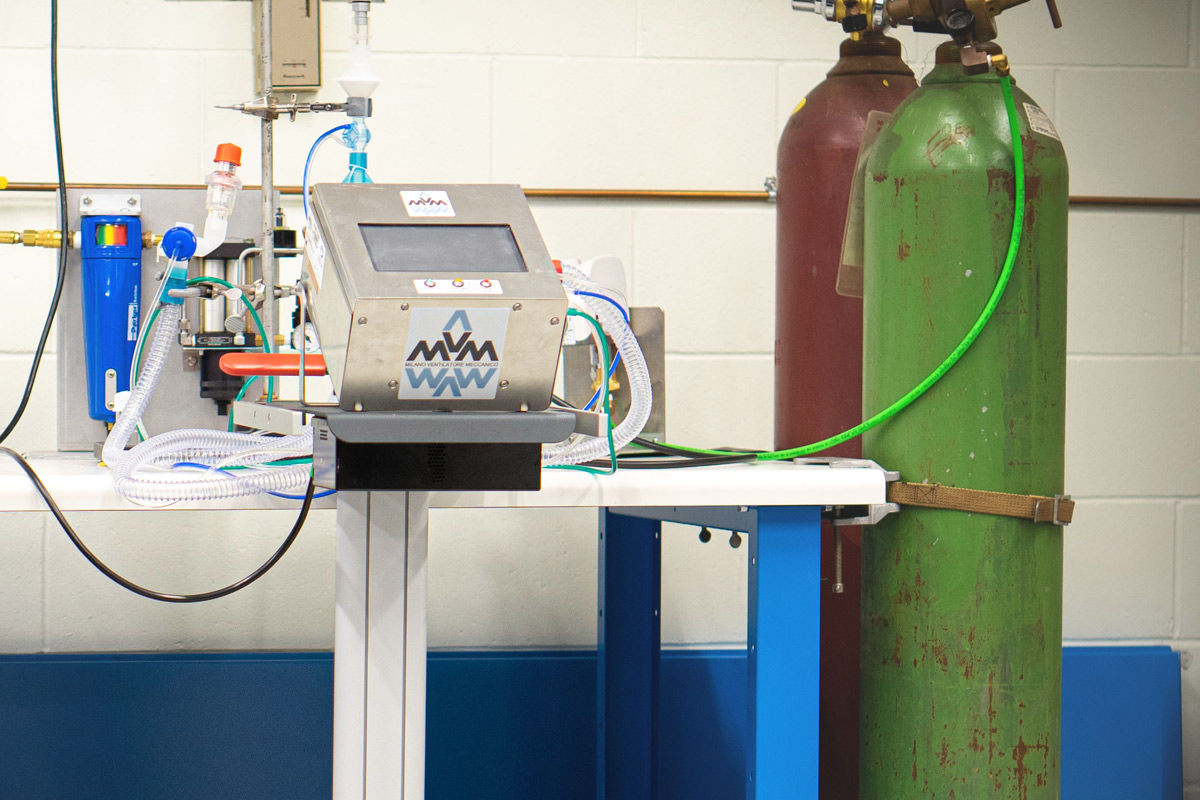
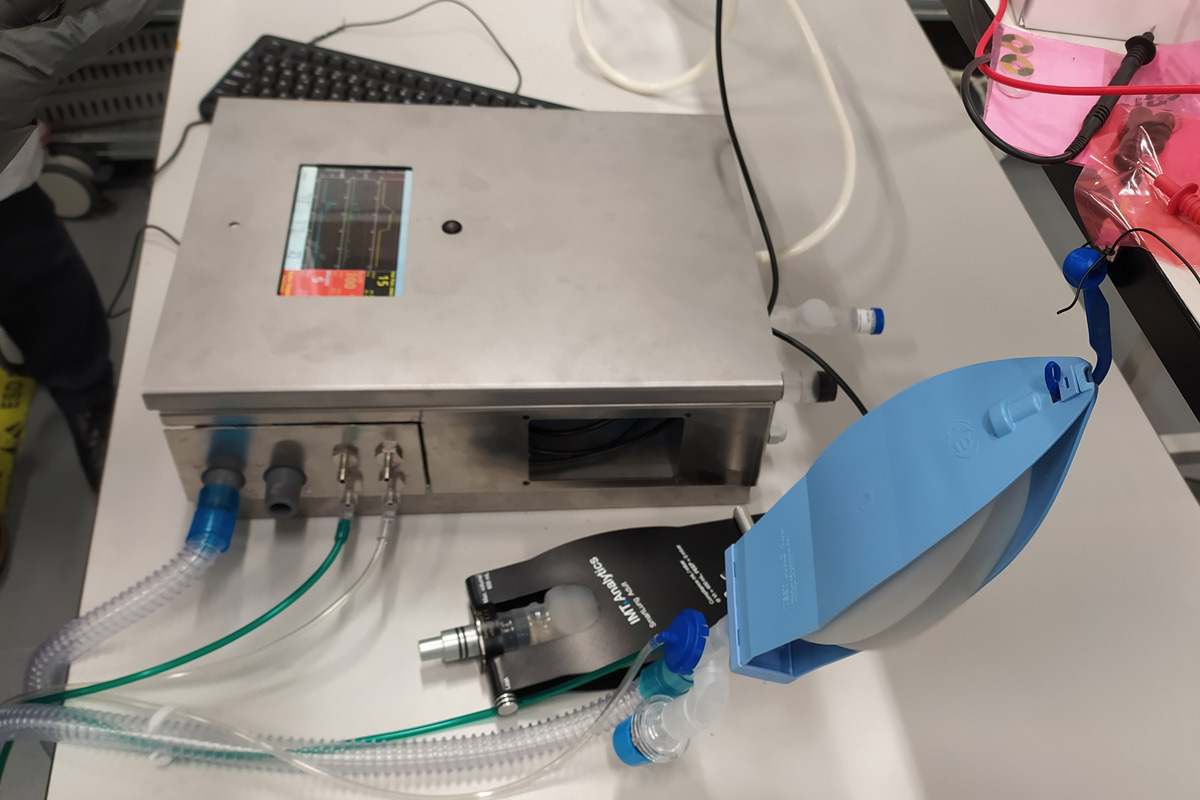
Guided by medical experts and in cooperation with industrial partners Elemaster in Italy as well as Vexos and JMP Solutions in Canada, the MVM Collaboration succeeded — in record time — to design, develop, build and certify a safe ventilator. In Canada the effort was led by Nobel laureate Art McDonald, involving team members from Canadian Nuclear Laboratories Chalk River, McDonald Institute, SNOLAB, and TRIUMF. In September 2020, the MVM received approval by Health Canada under the Interim Order and Vexos started to deliver the 10,000 units that have been ordered by the Federal Government of Canada.
The rapid development of this project was only possible due to around the clock work by a large team spread across nine time zones, enabling effective hand-off and progress on the various development tasks. The MVM development is a prime example of how the expertise of nuclear and particle physicists — who are trying to unravel the mysteries of the foundations of the Universe — can be effectively mobilized in real time to help tackle our major global societal challenges. [Credit: MVM Collaboration]
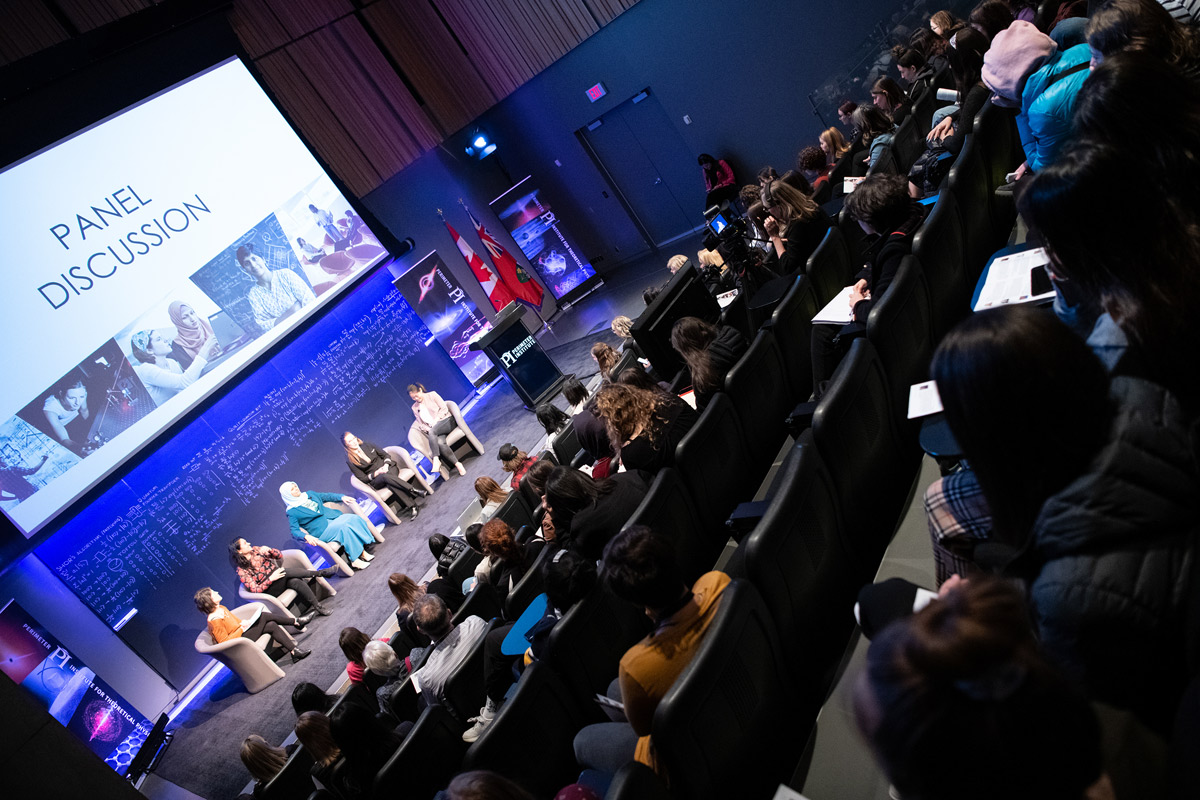

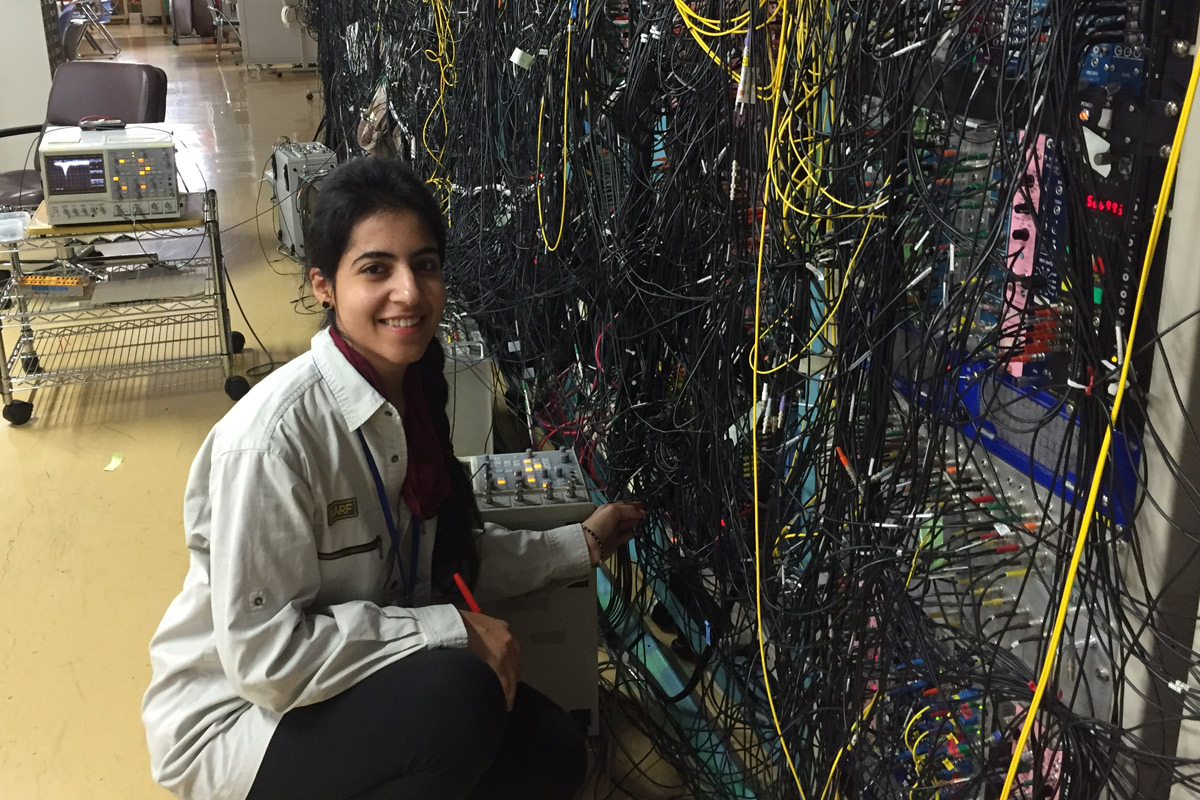
“During my PhD at Dalhousie University and Saint Mary’s University, my opportunity to work at international labs (GSI and RIKEN) helped me master critical thinking and problem-solving skills. It helped me master data analysis, data visualization and presentation skills. All these skills are very helpful in projects at my current job as a data scientist at iWave on Prince Edward Island.”
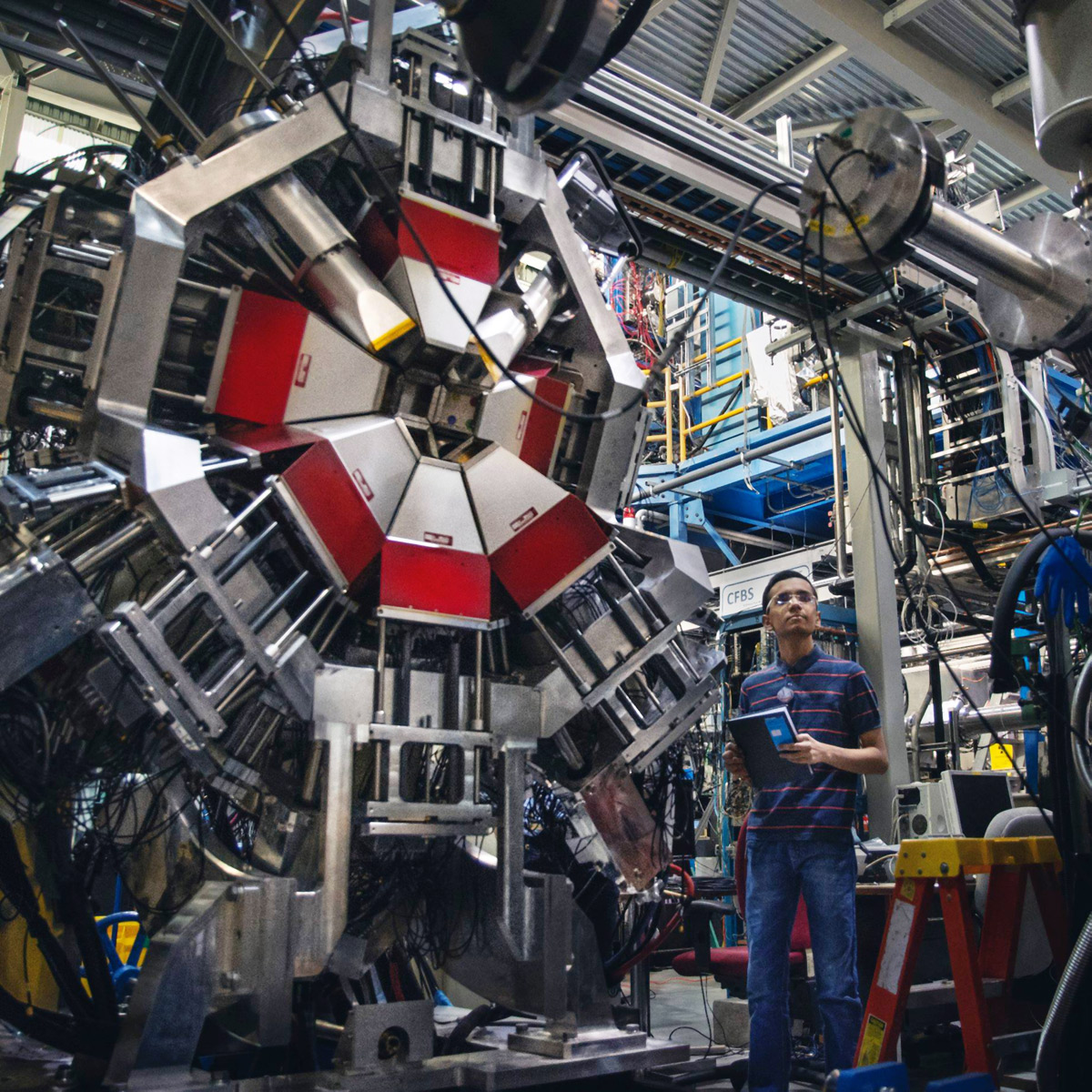
“Michael Faraday didn’t have a university education — he just followed his curiosity and went on to become one of the most widely regarded experimentalists in physics and beyond. Although physics research is much more specialized today, the work done at TRIUMF is considerably more collaborative and has so many more interdisciplinary applications than I ever imagined. There are people from all over the world working together, each with their own unique background. Even though almost every experiment nowadays is highly specialized in one particular field, you still need people with a diverse set of skills for it to be successful.”
